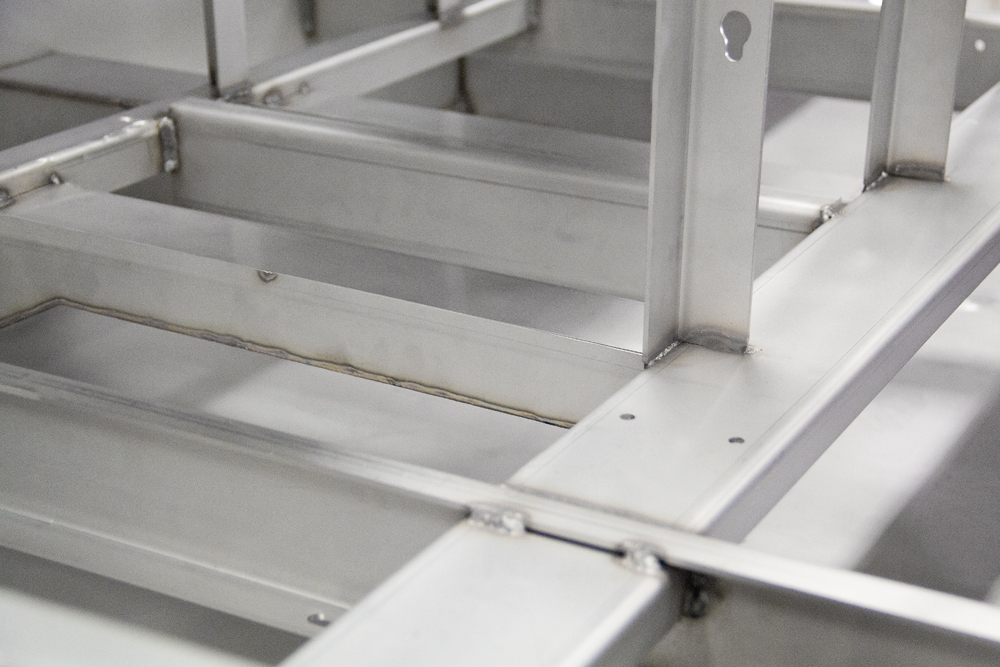Parts cleaning equipment performs a dirty job. Its sole purpose is to remove chips, oil, coolant and other contaminants from manufactured parts. Aqueous parts washing combines water with water based chemistries for cleaning. The cleaning fluid is generally held in a tank and delivered to spray chamber to be dispensed on to the soiled parts. The cleaning chamber is subject to hot water, cleaning detergents, steam, and air. Parts washers can be run continuous or intermittently. The environment can go from dry to hot and steamy, multiple times over a given time period. These various conditions expose the machine to potential corrosion.
Parts washers can be constructed of various materials. The most common tank and spray chamber construction material is either carbon steel or stainless steel. Stainless steel has many advantages over carbon steel: Resistance to corrosion for longer life, impact resistance, easy to clean, no painting required, and it is aesthetically appealing. Even though stainless steel is by far a superior material, for applications requiring low-cost equipment with shorter required life, carbon steel may be acceptable. For all applications requiring a spot-free finish, high-quality rinse water is required. Rinse waters such as R.O. (reverse osmosis) or de-ionized water are lacking minerals and looking to absorb them, and therefore are very corrosive and will destroy a carbon steel machine in a very short period of time. When viewed over the long term, stainless steel is much more cost-effective than other materials.
In addition to the general body construction, parts washers typically have a variety of other components that complete the machine. Solution pumps draw cleaning fluid from the tank and deliver it to the spray chamber for cleaning. Pumps heads can be constructed of either cast steel or cast stainless steel. Process piping is used to deliver the fluid that is pumped from tank to the spray system. The most common types of process piping are either steel or stainless steel. In conveyor-style systems, conveyor belts are used to carry parts through the machine and can be constructed of galvanized steel, stainless steel, plastic, or other materials. The construction of pumps, process piping, conveyor belts, and other components is largely determined based on the specific cleaning application, expected life, and budget.
Alliance Manufacturing uses high-quality stainless steel as the primary fabrication material of our parts washing systems. In conjunction with stainless steel, Alliance’s patented lift-off canopy segments are constructed of corrosion-resistant fiberglass composite. These materials together assure that the end-user will get the most out of their investment.
